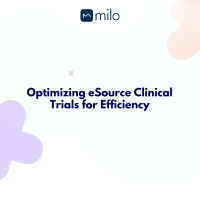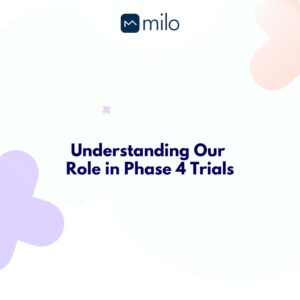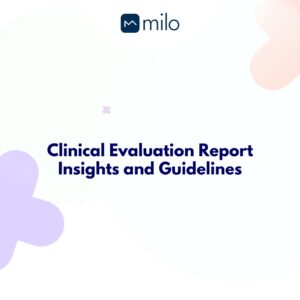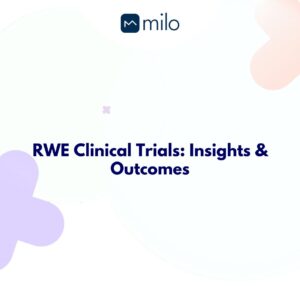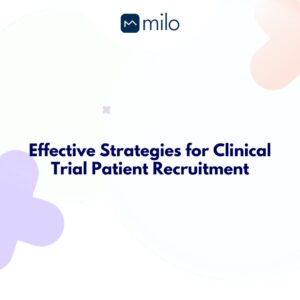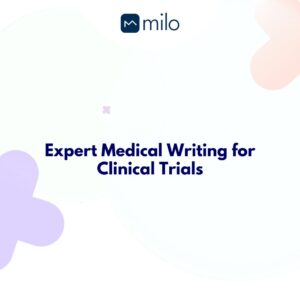Moving to fully electronic eSource clinical trials is a big step in modernizing. This change is part of MILO’s vision. They want to make trial processes easier with a digital platform. This platform offers tools like ePRO, eConsent, and more. Their goal is to make all data fully digital, meeting global standards for trials.
Going all-digital keeps data accurate because it goes straight to the sponsor’s system. This cuts down errors and boosts the efficiency of eSource clinical trials. Fast access to data helps in making better decisions. The FDA and other agencies see the value in eSource. Yet, they note that not everyone is adopting it quickly.
To deal with this slow adoption, we need to change how we manage things. We also need everyone involved in trials to work together better. Using a clinical trial management system to its fullest can lead to better efficiency and data quality in trials.
Key Takeaways
- eSource clinical trials offer improved data integrity by reducing human intervention.
- MILO’s digital clinical trials platform enables faster access to research data.
- Regulatory agencies recognize the benefits of eSource but note slow adoption rates.
- Enhanced efficiency and decision-making processes are key advantages of adopting eSource technologies.
- Overcoming adoption challenges requires transformative change management and stakeholder collaboration.
The Importance of eSource in Modern Clinical Trials
eSource is becoming key in today’s clinical trials for better data management and accuracy. eSource helps solve many problems but also faces its own challenges. Stakeholders must work together to integrate it well. Let’s look at its benefits, hurdles, and how different players contribute.
Benefits of eSource Implementation
eSource offers big wins for clinical trials. It makes designing protocols and finding patients easier with new software. It cuts down on mistakes from manual data entry and boosts data quality. Thanks to eSource, trials can move faster and get important findings sooner.
Challenges in eSource Adoption
But, adopting eSource isn’t easy. One major issue is making sure it meets rules in different areas. We also need to handle data safely and work out how to automate data sharing. We need everyone involved to learn new skills and work together better. To overcome these issues, we all need to work together closely.
Stakeholders’ Roles in eSource Implementation
Bringing eSource into trials needs teamwork among all stakeholders. Agencies, sponsors, researchers, and tech firms all play important parts. Working with agencies ensures eSource meets high data standards. Teaming up with tech firms, like MILO, helps build and use effective eSource tools. Our goal is to improve the trial process for everyone’s benefit.
Transformative Change Management for eSource Adoption
To fully embrace eSource clinical trials, we need a big change in managing source data. We must switch from using both paper and electronic data to only electronic. It’s crucial to handle this change well. We also need to get patients and trial sites involved early. This helps keep data safe and accurate.
Moving to digital clinical trials means we have to overcome some big challenges. We must work well with all stakeholders from the start. MILO, a leader in virtual clinical trials software, makes integrating eSource methods easier. This helps everyone involved and improves how data is collected.
It’s important to focus on getting results to patients faster and keeping data safe. Challenges with different systems working together can be big. But, with the right approaches to collecting data, we can solve them. Working together and adapting our strategies are key to success.
Going digital first makes clinical trials better and data more reliable. MILO’s virtual clinical trials software supports this shift. It makes moving to a fully eSource trial system easier.
eSource Integration Strategies
Integrating eSource technologies into clinical trials makes collecting data faster and better. We look into three main ways to do this: using Electronic Health Records (EHR), mobile devices and apps, and Direct Data Capture (DDC). These methods boost the trial’s efficiency and keep the data accurate and reliable.
Leveraging Electronic Health Records (EHR)
Using EHR in clinical trials helps directly use data from healthcare systems. EHR fits well with tools like ePRO and eCOA that MILO uses to make data management smoother. This means less double data entry, fewer mistakes, and data that’s both timely and correct. By using existing health records, researchers get valuable data for making smarter decisions in trials.
Using Mobile Devices and Apps for Data Collection
Collecting data through mobile means is effective for clinical trials. Smartphones and tablets, with specific apps, help gather quality data right away. This method boosts how engaged participants are and ensures data is correctly and quickly recorded. Mobile technology lets those not at the trial site help out, making the data collected even richer.
Direct Data Capture (DDC) Techniques
DDC is key in cutting down on needing to write data down or enter it manually. This method gathers data right from its source using digital forms, wearable sensors, or other tech. DDC makes collecting data easier, lowers mistake chances, and speeds up how fast information goes from being collected to analyzed. The use of DDC improves data’s reliability and helps with quicker regulatory filings.
Mixing EHR, mobile data collection, and DDC in eSource creates a strong set-up for better clinical trial processes. By adding these strategies to MILO’s digital platform, we ensure data is top-notch and make things smoother for both researchers and participants.
Ensuring Data Quality and Integrity in eSource Clinical Trials
Ensuring data quality and integrity is crucial in clinical trials, especially in the eSource field. The move to digital collection improves efficiency and accuracy. Yet, we must stick to strict standards and real-time checks to see these benefits.
Compliance with ALCOA+ Standards
Keeping eSource data quality high means following ALCOA+ standards. These criteria are key to Good Clinical Practice guidelines. They make sure our data is trustworthy, forming a strong base for research. By following ALCOA+, we keep our data’s integrity and gain trust in our trial results.
Real-time Data Monitoring and Verification
Real-time data checking is vital in eSource clinical trials. It lets us find and fix issues quickly, not after collecting data. At MILO, we use tech like EHRs and mobile apps for fast data checking. This not only improves data quality but also makes trials more efficient.
By focusing on real-time checks and ALCOA+ standards, we commit to top-quality data. These efforts are key to better clinical trial results. They change how we run and manage eSource clinical trials for the better. High data quality and integrity lead to more effective and precise research, helping everyone involved.
FAQ
What are eSource clinical trials?
eSource clinical trials use electronic methods to collect and handle data. This approach ensures the data is accurate, reduces human mistakes, and makes the entire process smoother. It covers everything from gathering data to submitting it.
Why is the move to fully electronic eSource clinical trials important?
Moving to fully electronic eSource clinical trials brings studies up-to-date. It allows for quicker and more precise data collection and management. This method meets global standards, cuts down on errors, and helps make better decisions.
What benefits do eSource technologies offer in clinical trials?
eSource technologies make clinical trials more efficient and accurate. They help improve study designs, gather data smoothly, get more participants, and review data in real-time.
They also support using machine learning, monitor risks better, and ensure data is top-quality.
What are the challenges in adopting eSource clinical trials?
The main challenges include meeting regulatory guidelines, adapting roles, managing data exchanges, and protecting data privacy. Coming together to address these issues is key to success.
How can stakeholders facilitate eSource adoption in clinical trials?
Stakeholders can work with regulators to perfect eSource methods and create new tech solutions. Working together helps tackle privacy, security, and how different systems work together.
What role does change management play in eSource adoption?
Change management is vital for eSource adoption. It means involving patients and trial sites early on, focusing on data integrity and safety, and fixing tech issues. All to make switching to digital data management smooth.
How can EHRs be leveraged in eSource clinical trials?
EHRs can capture and recycle data from medical services for research. Pairing with platforms like MILO improves data quality. This leads to better trial results.
How can mobile devices and apps aid in data collection for clinical trials?
Mobile devices and apps let people not at the trial site, like participants, manage data. This method makes the trial experience better and keeps data in order.
What are Direct Data Capture (DDC) techniques, and how do they benefit eSource clinical trials?
DDC techniques collect data directly and instantly from participants or gadgets. This avoids the need to enter data more than once, reduces mistakes, and makes the process faster.
Why is compliance with ALCOA+ standards important in eSource clinical trials?
Following ALCOA+ standards guarantees the data’s quality and trustworthiness. These principles are vital for reliable clinical research data and follow Good Clinical Practice.
What is the importance of real-time data monitoring and verification in eSource clinical trials?
Monitoring and checking data as it comes is crucial for keeping it accurate and consistent. Using EHRs and mobile tech allows instant data collection. This shortens the time needed for entering data and boosts efficiency.

